Watering pepper in the greenhouse and open field: how often and correctly to water
To get a decent harvest, any crop must be properly cared for. Watering is one of the main ingredients for successful growing. Pepper has its own characteristics regarding the irrigation regime, without which it is very difficult to achieve good growth and the formation of a high yield. How often and correctly to implement this very responsible agrotechnical technique when caring for peppers in a greenhouse and in the open field will be discussed below.
Worth knowing! Pepper watering mode different from both tomatoand from cucumbers.
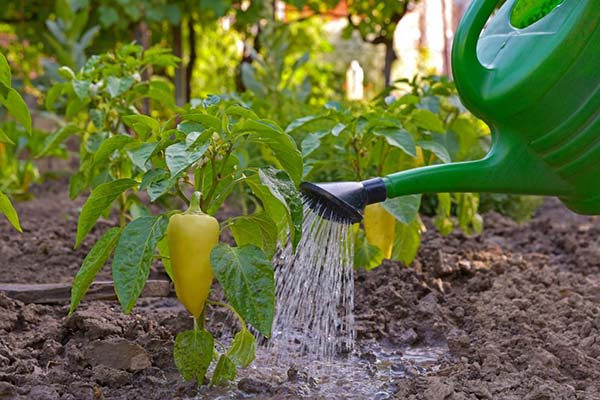
Content
Why watering peppers regularly is important
Pepper is not only a very thermophilic, but also a fairly hygrophilous culture that grows well and bears fruit only on always moderately moist soil.
Of course, perfectly best for pepper drip irrigation, because it requires an almost daily introduction of moisture.
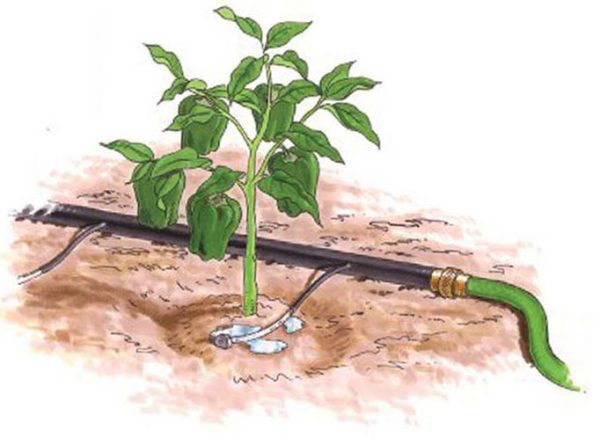
But if you do not have such an opportunity (although making the simplest homemade drip irrigation from plastic bottles is not difficult at all), then it's okay: you can always, for example, mulch your beds.
Note! If the pepper does not have enough moisture, then the plant may simply begin to shed leaves, ovaries, stop blooming, and the fruits themselves (peppers), as a result, will not be able to gain the declared mass.
Features of watering pepper in a greenhouse and open field
Of course, if you grow peppers in a greenhouse, then it is much easier to create more suitable (= favorable) conditions in it. Indeed, in a protected ground, you have much more chances to maintain both temperature and humidity conditions, regulating them with the help of ventilation.
But in the open field you do not have such opportunities, which means that you need to approach watering pepper in the open field with much more seriousness.
Thus, there are no downright peculiarities of watering peppers in the greenhouse and in the open field - the rules are always the same, it is another matter that the greenhouse or outdoor growing conditions make their own adjustments.
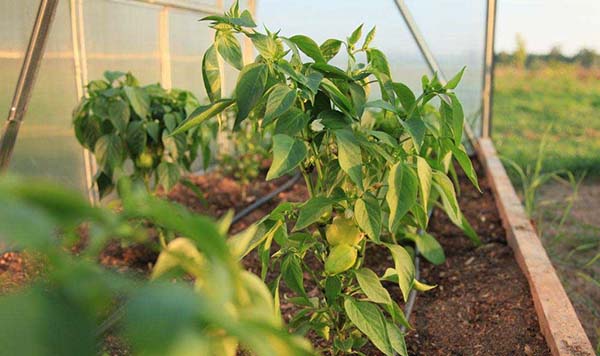
How to water peppers correctly: rules for watering in a greenhouse and open field
Short tips and tricks for proper watering of peppers in open and closed ground:
- Watering itself is recommended early morning (default) or before lunchtime (if the weather is cloudy), or late in the evening after sunset (in severe drought and high temperatures during the day, especially in hot southern regions).
Watering peppers in a greenhouse in the evening, especially if you live in a fairly cool region, where there are noticeable temperature changes, in no case is it.
- For watering, you only need to use warm and settled water (for example, from a barrel or bath).
Worth knowing! When they say "warm", this does not mean at all that the water needs to be specially heated somehow. It means that this there should not be ice water, directly from the well... If your country water from a hose is + 18-20 degrees, then this is quite normal, especially when the weather is summer = hot.
- To water preferably at the root, but if you get on the leaves, then there will be nothing wrong with that (unlike tomatoes).
- Need to water often: in a day or two, or every 3-5 days.
Of course, first of all you need navigate the weather... If the weather is dry and hot, then you will have to water every day (especially in the open field), if it is cloudy and humid, then after 2-3 days or even less often (especially in a greenhouse).
- Concerning watering rates, then it is better to add moisture in small portions, spending about 2-5 liters of water per 1 plant (depending on its size).
Thus, the basic principle of watering pepper is often and little by little, in other words, the soil under the peppers should always be moist (but in moderation!).
Remember! Both drying out and excessive moisture of the plantings are very undesirable.
Watering and mulching
To reduce moisture evaporation, pepper beds can be mulched. Mulching will help keep moisture in the soil longer, and you won't need to water your peppers as often (that is, much less often).
As for whether is it possible to water directly on mulch, from abovethen the answer is Yes, can.
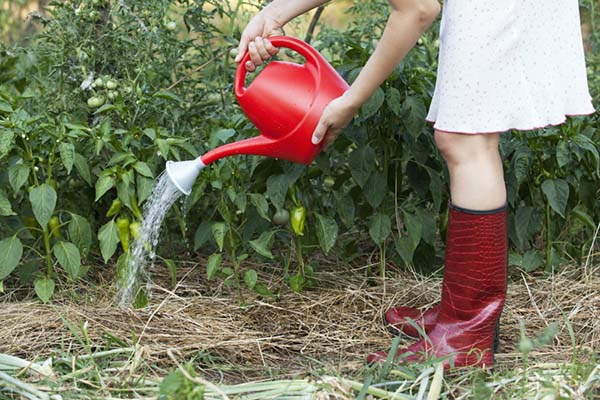
Than can mulch pepper:
- rotted manure (humus) or compost.
- sawdust;
- straw or hay.
By the way! Another advantage of mulching is ridding the beds of weeds.
Homemade maximally simplified drip irrigation from a plastic bottle
Alternatively, you can dig water bottles (1.5-2 or even better 5-liter) into the ground between the peppers, making holes in them (in the lids or in the bottom), from which water will gradually flow out and moisten the soil under the plants.
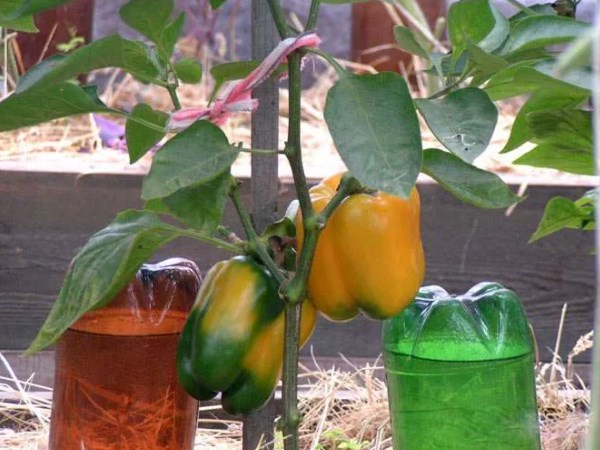
You can learn how to make drip irrigation from plastic bottles from the following video:
Seen: drip irrigation with bottles
When and how to water pepper
Now let's talk about when exactly peppers need watering especially, and when any watering should be reduced:
- After planting pepper seedlings, the watering rate of the plant as it grows must be gradually increased (starting from 0.5-1 liters and up to 4-5 liters under the bush).
- It is especially important to regularly water the pepper. in the flowering phase and the initial period of fruit filling.
- But when the peppers begin to take on color, i.e. turn yellow or red, the number and frequency of watering needs to be reduced (for example, if before that you watered every day, now - every 2-3 days).
How to water peppers in hot weather (July-August)
It is equally important to monitor the soil moisture under the peppers during the hottest period of summer (July-August), when the moisture evaporates mercilessly, especially when grown outdoors.
The fact is that many gardeners do not quite correctly determine that the plant needs urgent watering, especially in the heat.
Worth knowing! Leaves drooping in heat is a normal, natural plant reaction. Plants thus reduce the leaf area to prevent increased evaporation of moisture from the leaves during hot times of the day. And as soon as evening comes, it gets cooler, the leaves straighten out again and take on a normal appearance.
In other words, do not pour the pepper if its leaves suddenly droop.
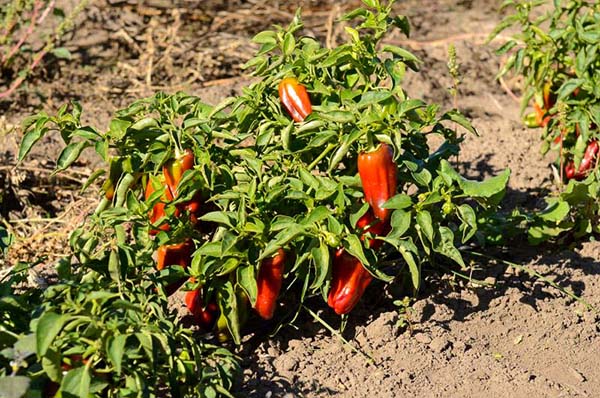
Thus, you now know that pepper is a crop that needs regular watering. In general, everything is simple - water often and use warmer water.
Video: how often and how much to water the pepper

